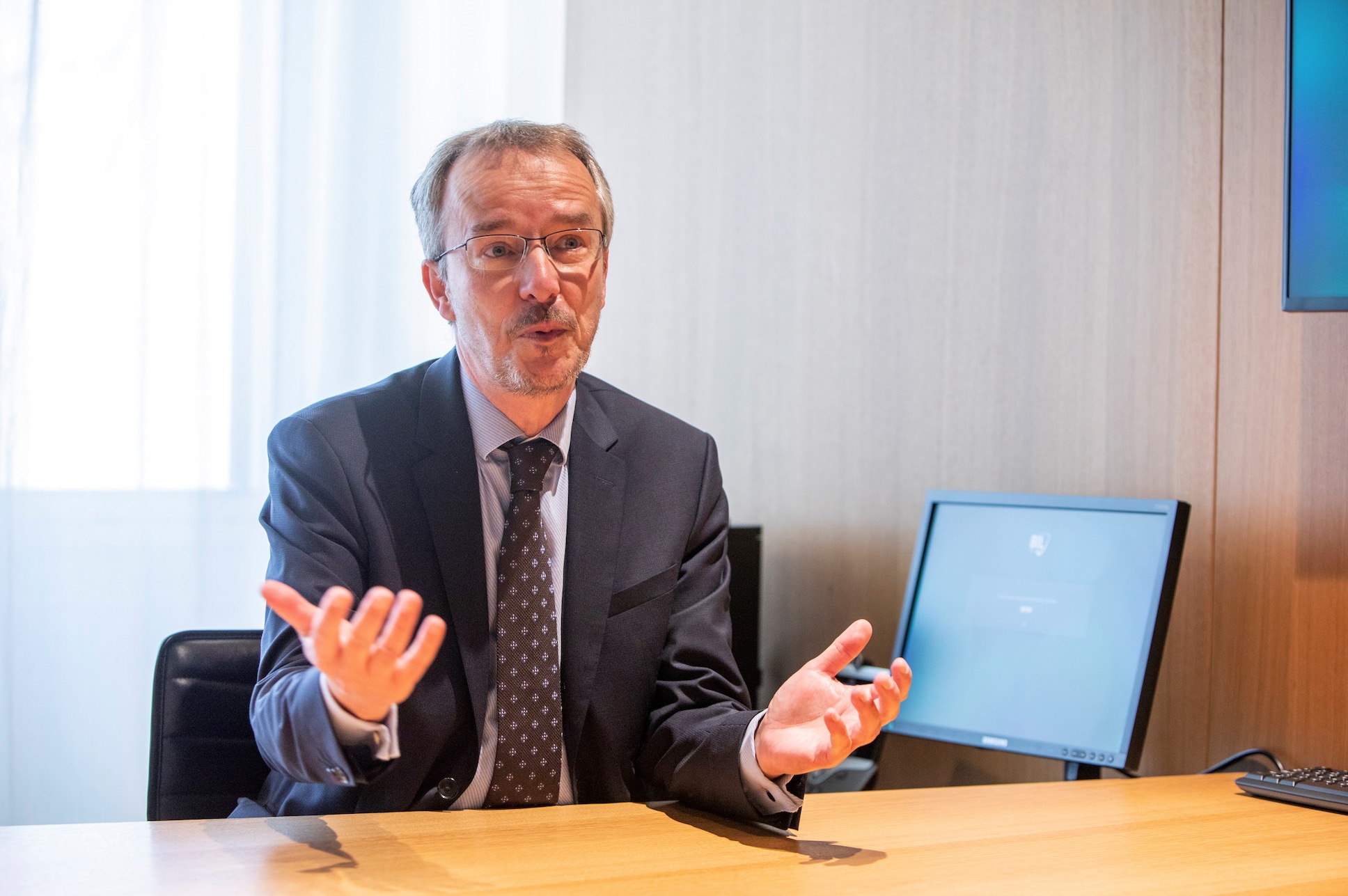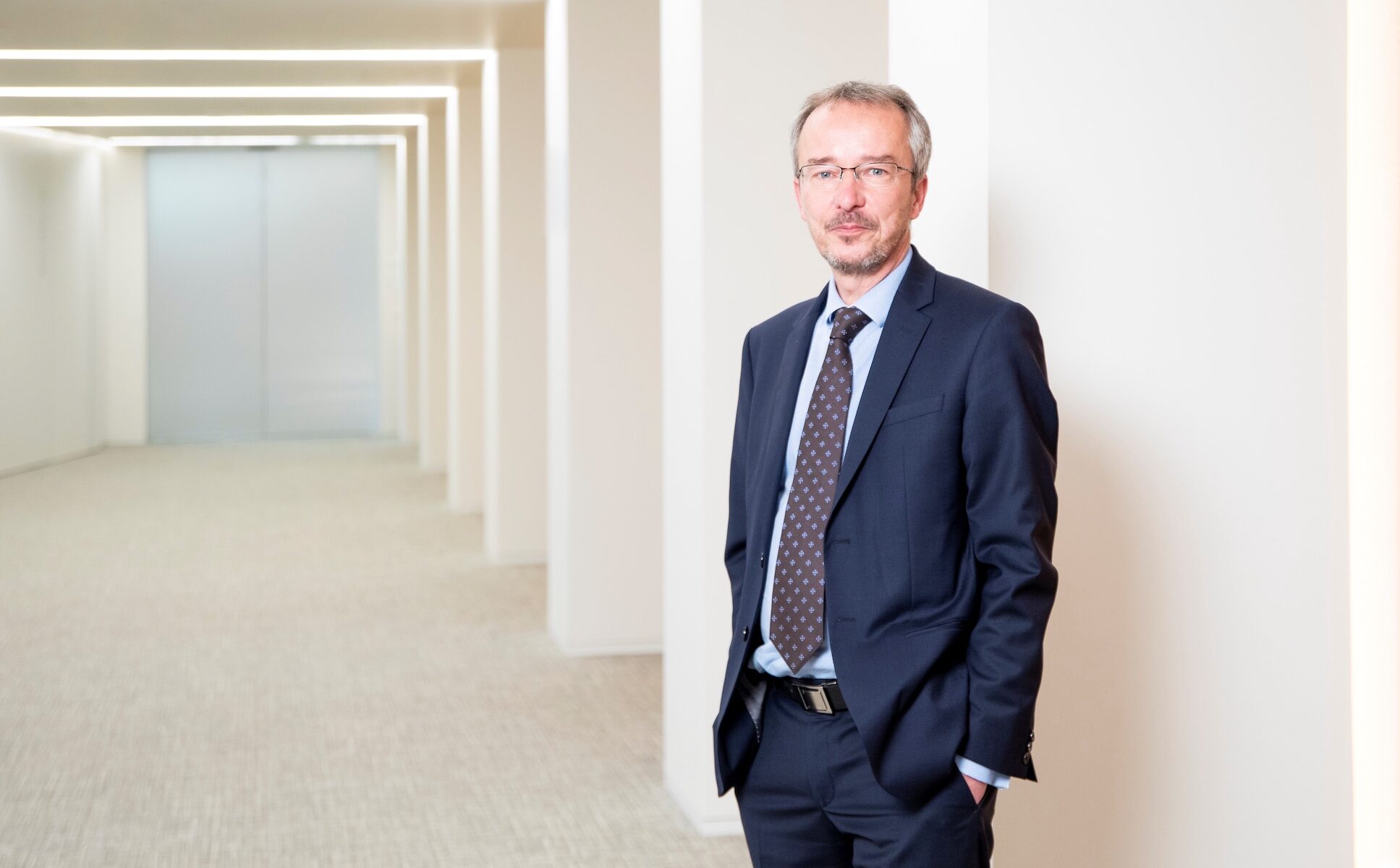Investments: the lessons of the health crisis
Stock markets were severely shaken by the health crisis in 2020, before gradually returning to and then exceeding their pre-crisis levels. Olivier Goemans, Senior Portfolio Manager at BIL, shares with us the lessons drawn from the pandemic and his forecasts for the future.
What changes have you seen as a result of the crisis?
We have seen an acceleration in several pre-existing phenomena, such as digitalisation. The crisis transformed business models and companies had to adapt quickly to offer solutions. Result: today, data is truly a commodity, and big data an inescapable reality. You only have to look at the stock market capitalisation of the semiconductor industry (chip cards) to see this, as it is already bigger than that of the energy sector.
A second change has been a slowdown in globalisation. The pandemic highlighted the complexity of supply chains and, often, their fragility when faced with global crises. How can you manage production when parts of it are located at the other end of the world in a region in lockdown? Managing this has become highly complex. We have switched from just-in-time inventory management to just-in-case management, with the minimum quantities required to deal with the current situation. As well as the slowdown in globalisation, the crisis has accelerated the shift in the centre of gravity towards Asia, with the signature of the Regional Comprehensive Economic Partnership (RCEP), which aims to create the largest global free-trade zone.
Lastly, we saw accelerating and growing interest from retail and institutional investors in the issue of sustainability. It is fair to say that this is a global phenomenon in society today. So much so that ESG (Environmental, Social and Governance) funds saw record inflows throughout 2020, whilst traditional funds experienced more modest inflows.
Were investors more cautious in response to the situation?
The outbreak of the crisis and the global lockdown caused panic on stock markets and uncertainty regarding the future of the economy. Investors didn’t necessarily act hastily or sell their portfolios, but they needed our day-to-day support, and for us to explain what was happening on the markets. This initial phase was all the more critical as it was very difficult to anticipate how the pandemic would unfold, and the size and economic impact of successive waves varied significantly by region and business type. Although the crisis was global, its impact was far from uniform. One important aspect of our discussions with clients therefore focused on the resilience and adaptability of our economic systems.
Overall, after a brutal and unprecedented collapse, stock markets recovered thanks to the combined support of central banks and governments. 15 months after the beginning of the crisis, we are starting to see a return to more traditional behaviour: the TINA (There Is No Alternative) effect that works in favour of equity markets; FOMO (Fear Of Missing Out) as investors scramble to invest out of fear of missing out on bullish markets; and lastly, the YOLO (You Only Live Once) effect seen among a new generation of investors relying on online trading platforms (such as Robinhood), social media, and a certain number of influencers, a phenomenon that has probably become more pronounced since the first lockdown.

Investors must diversify and invest in uncorrelated assets, as it is impossible to predict the future.
Have investment strategies evolved?
We believe that asset allocation must be proactive and reactive, adapting future prospects to a constantly changing environment. The search for yield means that many investors are having to step outside of their comfort zone. What doesn’t change, in our opinion, is the need to diversify. For one simple reason: it is impossible to predict the future. Diversification via bonds is dull and penalises performance given how low interest rates are, but such diversification remains essential as a buffer to any extreme stock market movements. There are other alternatives, but these should only be used sparingly and investors must bear in mind their limitations (reduced liquidity, heightened complexity, etc.).
In our opinion, the transition to a more sustainable economic model is the biggest change as regards investment strategy. This isn’t a revolution, but an evolution, which involves the integration of non-financial considerations into traditional financial research.
What lessons can we learn from this complex period?
One important lesson is that the economy and financial markets are two different things. Whilst analysing the economic environment mainly consists of looking in the rear-view mirror, defining an investment strategy means we have to examine the future, uncover new trends, and assess how these differ from the consensus implicit in various valuations. Financial markets very rapidly distanced themselves from macroeconomic reality to focus on future projections. We saw a divide open up between the stressful environment of the health crisis and the performance of financial markets. Markets mainly focused on companies that prospered during the crisis, the aftermath of the crisis, and reconstruction.
In order to construct a strategy and outlook for financial markets, we need to look to the future, not just compile economic data and integrate economists’ sentiment indicators. It’s like driving a car. The rear-view mirror is an important factor in the safety of our journey, but it is dangerous to drive with our eyes fixed on the rear-view mirror. Unless we’re trying to reverse. In other words, we have to analyse markets and their momentum, but it is essential to create a scenario for the future in order to prepare for it, bearing in mind our weaknesses.
“The winner takes it all” is not just an ABBA hit; it’s also an interesting observation about the financial markets. Some companies – the inevitable technology disruptors or clear market leaders – strengthened their dominant positions during the turbulence of the health crisis. As proof of the economy’s resilience and ability to adapt, this phenomenon can also be seen in the accelerating concentration of stock market indices in certain companies with often stratospheric market capitalisations. There is nothing intrinsically worrying about this, provided that investors are aware of it when constructing their portfolios.
Ultimately, investors must understand that there is a pendulum between neurosis (sell everything, the end is nigh) and euphoria (invest to the hilt or miss the market’s rise). It is essential to stay cool, be disciplined and remain humble in order to strike the right balance. We can learn a lot from behavioural finance on this issue.
In terms of investing, who were the winners and losers during this crisis?
After the recession, economists tried to describe economic recovery using different letters. There was talk of:
-
- a V-shaped recovery, i.e. a recovery as swift and steep as the fall in economic indicators has been;
- a U-shaped recovery, similar to a V-shaped recovery but with a longer-than-expected lull;
- an L-shaped recovery, with a period of shorter or longer stagnation after a dramatic collapse;
- a W-shaped recovery, with a swift recovery from a sharp drop, followed by a second sharp drop and another rapid recovery.
We preferred to talk of a K-shaped recovery in order to illustrate the range of very diverse impacts, the spread of fortunes, and the variance in recovery rates depending on the type of business, sector, industry and so on. There are winners and losers. The gap has widened further between leaders and followers, industry and services, technology and tourism, for example.
We also note that the S (social) considerations in non-financial ESG analysis have been put under the spotlight.
Adapting our forecasts is an integral part of our business. That doesn’t stop us having strong convictions.
What are your convictions for the coming years?
The environment is constantly changing and we must constantly adapt our forecasts. That is an integral part of our business. Yet that doesn’t stop us having strong convictions. And our convictions are straightforward: we are both realistic and optimistic about the future.
Investment remains a relative game, a choice between the various types of investment available to you and the level of risk associated with each. If, and only if, you have the appropriate investment horizon and risk appetite, you should be invested in equities and remain flexible. And bearing in mind that anything might happen at any moment and that markets can collapse suddenly, diversification must remain a priority, with investment grade bonds offering the best buffer.
We also believe that responsible investment represents a paradigm shift. We are convinced that you will be able to outperform if you focus on optimising risk/return and integrate ESG criteria.
In any event, it is important to understand that it is not our business to predict the future with a crystal ball, but to imagine scenarios to prepare for the future and adapt to it.
Could there be any long-term effects if this situation continues for longer?
The most frustrating issue is the suffocation of interest returns. Interest rates have been at zero since the crisis. However, we are seeing a slight rise in long rates. If inflation increases, central banks may consider raising rates. Structural factors are holding interest rates low. If the crisis were to continue, that would be unlikely to improve. This means that savers are forced to invest. This isn’t necessarily a bad thing, but it is changing the habits of small savers for whom a risk-free savings account was previously the only way of growing their nest egg.
Although the crisis accelerated some trends such as digitalisation, it also put pressure on stock markets and investor behaviour. Today, investment professionals are optimistic and, more than ever, advocate a cool head and diversification.


 Mortgage
Mortgage Personal loan
Personal loan Savings
Savings